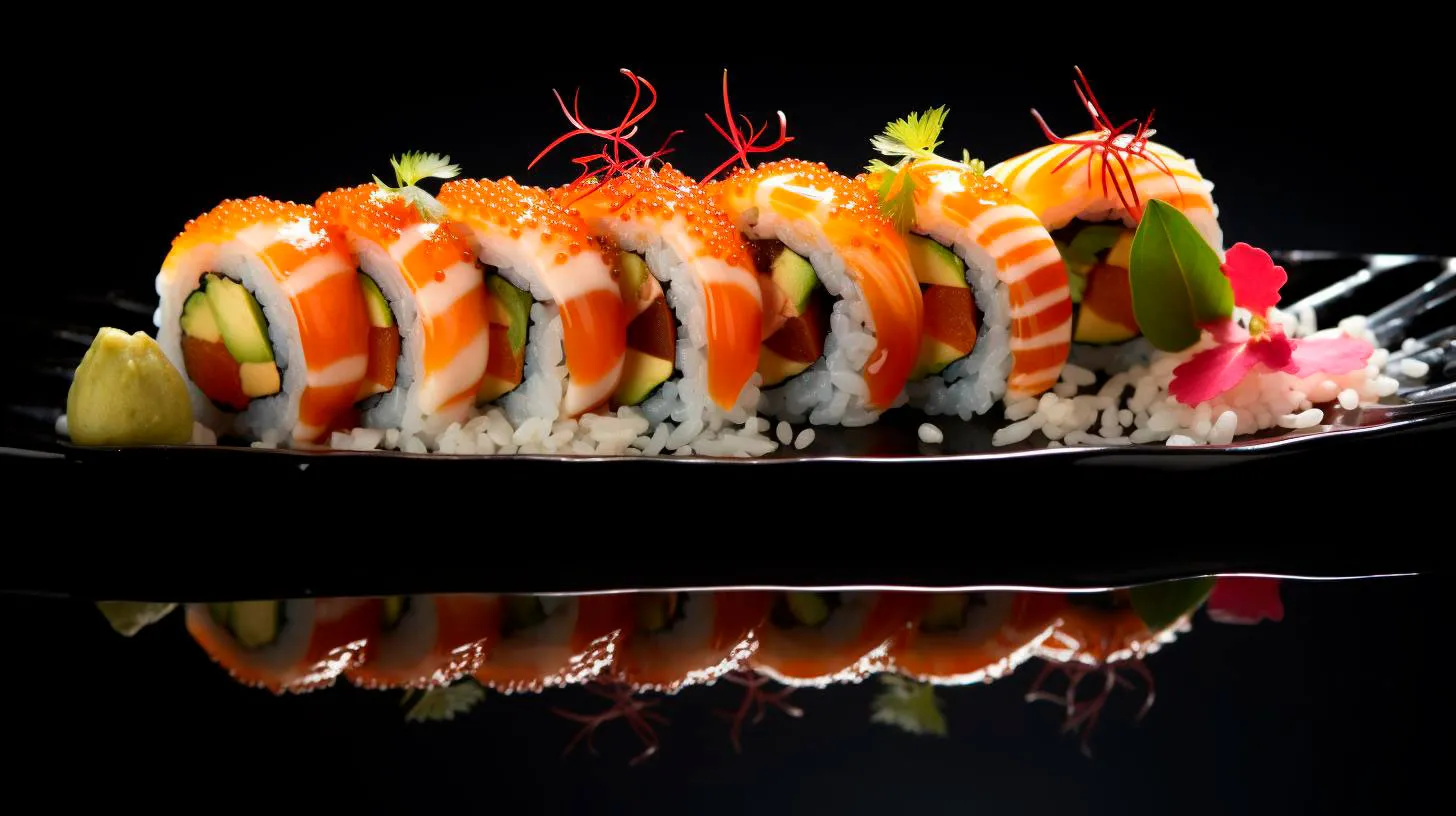Unlocking the Secrets of Ocean Conservation in Culinary Schools
With over 55% of the world’s seafood now being farmed and overfishing taking a toll on marine biodiversity, it has become imperative for culinary schools to equip their students with the knowledge and skills necessary to make responsible choices as future industry professionals.
The Rise of Sustainable Seafood in Culinary Education
Gone are the days when chefs solely focused on preparing delicious meals without taking into account their environmental impact. As the consciousness around sustainability grew, culinary schools recognized the need to adapt their curricula to reflect these changing perspectives.
One of the primary drivers behind this transformation has been the Monterey Bay Aquarium’s Seafood Watch program, which provides educational resources and guidelines to help consumers and businesses choose sustainable seafood options. Many culinary schools have integrated this program into their coursework, offering students invaluable insights into sustainable practices and responsible sourcing.
Key Takeaways:
- Culinary schools are incorporating sustainable seafood education into their curricula
- The Monterey Bay Aquarium’s Seafood Watch program plays a pivotal role in this transformation
- Students gain valuable insights into sustainable practices and responsible sourcing
The Benefits of Sustainable Seafood Training
By including sustainable seafood education in their programs, culinary schools are equipping students with a range of benefits that extend beyond the classroom walls. Some of the advantages of this training include:
- Environmental Awareness: When students are taught about sustainable seafood practices, they become more aware of the environmental impact of their ingredient choices. This knowledge incentivizes future chefs to prioritize sustainable sourcing and make conscious decisions that contribute to ocean conservation.
- Efficient Resource Management: Understanding sustainable seafood practices also allows culinary professionals to utilize resources more efficiently. By ensuring responsible sourcing and reducing waste, chefs can contribute to the long-term viability of seafood stocks.
- Consumer Demand: As consumers become more conscious of the ecological impact of their food choices, they are increasingly seeking out sustainable options. Culinary schools that incorporate this education are better preparing their students to meet the evolving demands of the market.
Key Takeaways:
- Sustainable seafood training raises environmental awareness in culinary students
- Efficient resource management contributes to the long-term viability of seafood stocks
- Culinary schools are preparing students to meet the rising consumer demand for sustainable options
Statistics Highlighting the Importance of Ocean Conservation
The urgency for incorporating sustainable seafood education into culinary schools becomes evident when looking at some compelling statistics:
- According to the United Nations, over 90% of global fish stocks are either fully exploited or overfished, contributing to the decline of marine biodiversity.
- A study published in the journal Nature showed that sustainable fishing practices have the potential to reverse the damage caused by overfishing in less than a decade.
- The World Wildlife Fund states that oceans occupy over 70% of the Earth’s surface and are home to more than 80% of all known species, making their preservation crucial to maintain global ecological balance.
Key Takeaways:
- Over 90% of global fish stocks are either fully exploited or overfished
- Sustainable fishing practices can reverse damage caused by overfishing in less than a decade
- Oceans are essential for global ecological balance and support a vast array of species
In conclusion, the incorporation of sustainable seafood education into culinary schools marks an important step toward ocean conservation. By equipping future chefs with the knowledge and skills to make responsible choices, these institutions are empowering a new generation of culinary professionals who can contribute to the sustainable future of the seafood industry.
The intersection of ocean conservation and culinary schools is a powerful one. As aspiring chefs gain insights into sustainable practices and the environmental impact of their ingredient choices, they become catalysts for positive change, leading the way in responsible seafood sourcing.
So, the next time you savor a seafood dish prepared by a graduate of a sustainable seafood program, you can relish not only the flavors but also the knowledge that your meal has contributed to the preservation of our precious oceans.
How Sushi Chefs are Driving Awareness for Sustainable Seafood
Sushi chefs have taken up the mantle to drive awareness for sustainable seafood and ensure the longevity of our oceans.
The State of Sustainable Seafood
The world’s oceans are under immense pressure due to overfishing, habitat degradation, and climate change. According to the United Nations’ Food and Agriculture Organization, over 30% of global fish stocks are overfished. This alarming statistic highlights the urgent need for sustainable fishing practices.
Sustainable seafood refers to products that are sourced from fisheries with minimal impact on the environment and ensure the long-term health of fish populations. It prioritizes responsible fishing methods, protection of endangered species, and reducing bycatch – the accidental capture of non-target species.
The Role of Sushi Chefs
As ambassadors of seafood, sushi chefs have a crucial role to play in promoting sustainable fishing practices. They have the power to shift consumer preferences towards sustainable seafood and create positive change within the industry. Here’s how sushi chefs are making a difference:
- 1. Collaboration with Sustainable Suppliers: Sushi chefs are forming partnerships with sustainable seafood suppliers. By sourcing their ingredients from responsible fisheries, they ensure that the fish they use in their creations are caught ethically and sustainably.
- 2. Educating Customers: Sushi chefs are actively educating their customers about sustainable seafood choices. They provide detailed information about the fish species, their origin, and how they were sourced. This helps customers make informed decisions when ordering their favorite sushi rolls.
- 3. Supporting Local Fisheries: Sushi chefs often source their ingredients locally, supporting smaller-scale fisheries that adhere to sustainable practices. This helps in reducing the carbon footprint associated with long-distance transportation and preserves local fishing traditions.
- 4. Promoting Lesser-Known Fish Species: To alleviate pressure on popular fish species, sushi chefs are introducing their customers to lesser-known, but equally delicious, fish varieties. This diversification of the menu reduces the demand for overfished species and allows other species to recover.
The Impact of Sushi Chefs
The efforts of sushi chefs in driving awareness for sustainable seafood have had a significant impact. Here are some key takeaways:
- 1. Shift in Consumer Preferences: Consumer awareness about sustainable seafood is increasing, and it is reflected in their choices. Many customers now actively seek sushi restaurants that prioritize sustainable sourcing, creating market pressure for the industry to adopt better practices.
- 2. The Growth of Sustainable Sushi Restaurants: Sushi restaurants that prioritize sustainable seafood sourcing have gained popularity. They are seen as pioneers and leaders within the industry, attracting customers who value environmental stewardship.
- 3. Positive Influence on the Fishing Industry: Sushi chefs’ demand for sustainable seafood has influenced the fishing industry. Fishermen and suppliers are adopting sustainable practices to meet the growing demand for responsibly sourced seafood.
The Future of Sustainable Seafood
The combined efforts of sushi chefs, consumers, and the fishing industry are critical for the future of sustainable seafood. By promoting responsible sourcing and educating consumers, we can create a positive impact. Here’s what the future holds:
- 1. Improved Fishing Practices: As demand for sustainable seafood grows, fishing practices will continue to improve. More fisheries will adopt regulations and techniques that minimize harm to marine ecosystems and protect species at risk.
- 2. Increased Availability of Sustainable Seafood: As awareness spreads, more sushi restaurants and seafood suppliers will prioritize sustainability. This will lead to a broader range of sustainably sourced seafood options for consumers.
- 3. Preservation of Marine Biodiversity: Sustainable seafood practices will contribute to the preservation of marine biodiversity. By protecting vulnerable species and their habitats, we can maintain the delicate balance of our oceans.
Sushi chefs are at the forefront of the movement to drive awareness for sustainable seafood. Through their collaboration with sustainable suppliers, education of customers, and support for local fisheries, they are leading the way towards a more sustainable future. As consumers, we play a vital role by making informed choices and supporting sushi restaurants that prioritize sustainability. Together, we can ensure the longevity of our oceans and continue to enjoy the flavors of sushi for generations to come.
Culinary Academies Combining Sustainability and Cooking Education
By combining the art of cooking with sustainable practices, culinary academies are not only preparing students for successful careers in the culinary industry but also equipping them with the skills necessary to make a positive impact on the planet.
The Rise of Sustainability in Culinary Academies
With the increasing demand for sustainable food options, culinary academies have recognized the need to adapt their programs to align with these evolving trends. Many students are now seeking education that combines their passion for cooking with a desire to make a difference in the world. By integrating sustainable practices into their curriculum, culinary academies are attracting students who are eager to learn how to create delicious meals while minimizing their ecological footprint.
Features and Advantages of Sustainable Cooking Education
1. Emphasis on Locally-Sourced Ingredients: Culinary academies are encouraging students to use locally-sourced ingredients whenever possible. By sourcing ingredients from local farmers and producers, chefs can reduce the environmental impact of transportation and support local economies.
2. Waste Reduction Techniques: Sustainable culinary education includes teaching techniques to reduce food waste. Students learn about proper portioning, utilizing food scraps creatively, and implementing composting systems to minimize waste in the kitchen.
3. Energy-Efficient Kitchen Equipment: Culinary academies are investing in energy-efficient kitchen equipment to reduce energy consumption. Students learn how to optimize the use of appliances and implement energy-saving practices in a professional kitchen setting.
4. Water Conservation Methods: Water conservation is a crucial aspect of sustainable cooking education. Students are taught techniques to conserve water during food preparation and cleaning, such as using water-saving dishwashing techniques and limiting water usage during cooking processes.
The Impact of Sustainable Cooking Education
By integrating sustainability into their cooking education programs, culinary academies are molding the next generation of chefs who prioritize environmentally-friendly practices. This shift in culinary education has several positive impacts on both the industry and the planet.
1. Reduced Carbon Footprint: Chefs trained in sustainable cooking methods have the knowledge and tools to significantly reduce the carbon footprint associated with food production. By sourcing ingredients responsibly and implementing waste reduction techniques, chefs can make a measurable impact on greenhouse gas emissions.
2. Increased Consumer Appeal: Consumers today are more conscious of where their food comes from and how it is prepared. Chefs with sustainability training can cater to this growing market by offering eco-friendly menus, attracting customers who prioritize sustainable dining experiences.
3. Inspiration for Change: Culinary academies are influencing not only their students but also the larger culinary community. By promoting sustainability, these academies are inspiring other chefs, restaurants, and food establishments to adopt more sustainable practices, creating a ripple effect within the industry.
Key Takeaways
Sustainable practices are no longer an afterthought in culinary education. Culinary academies are amending their programs to equip future chefs with the necessary skills to create delicious meals while reducing their environmental impact. By sourcing locally, minimizing waste, conserving water, and investing in energy-efficient equipment, chefs can make a positive difference in the culinary industry and contribute to a more sustainable future.
So, whether you dream of becoming a renowned chef or simply enjoy cooking as a hobby, consider joining a culinary academy that embraces sustainability. By doing so, you’ll not only hone your skills in the kitchen but also play a role in preserving the planet for future generations.
Sustainable Sushi: Preserving Ocean Life through Responsible Fishing
In this article, we explore the concept of sustainable sushi and how responsible fishing practices can help preserve our oceans for future generations.
The Issue at Hand
The demand for sushi has skyrocketed in recent years, leading to concerns about overfishing and its detrimental effects on the marine ecosystem. According to the United Nations Food and Agriculture Organization, 90% of the world’s fish stocks are either fully exploited or overexploited. This alarming statistic highlights the urgent need for sustainable fishing practices to protect our oceans.
The Importance of Sustainable Sushi
Sustainable sushi refers to the use of responsible fishing methods that prioritize the long-term health of marine ecosystems. By choosing sustainably sourced seafood for your sushi, you can contribute to the conservation of ocean life and help maintain biodiversity. Here are some key advantages and features of sustainable sushi:
- Protecting Endangered Species: Sustainable sushi promotes the consumption of fish species that are not overfished or endangered. By avoiding species on the brink of extinction, you contribute to their preservation and safeguard their future.
- Preserving Marine Habitats: Sustainable fishing methods, such as line-caught and pole-caught fishing, minimize damage to delicate marine habitats like coral reefs. This approach ensures that ecosystems remain intact and function properly.
- Reducing Bycatch: Bycatch, the unintentional capture of non-targeted species, is a significant problem in traditional fishing methods. Sustainable sushi focuses on using fishing techniques that minimize bycatch, reducing unnecessary harm to marine life.
- Sustainable Farming Practices: In addition to wild-caught seafood, sustainable sushi also incorporates responsibly farmed fish. Fish farming practices that prioritize the use of sustainable feed, minimal antibiotics, and proper waste management contribute to a healthier marine environment.
Key Takeaways
Sustainable sushi is not only an ethical choice but also a way to ensure the future availability of seafood. By incorporating sustainable practices into the sushi industry, we can enjoy this culinary delight while protecting the oceans. Here are the key takeaways:
- Choose sushi made from sustainably sourced seafood to contribute to marine conservation efforts.
- Avoid species that are overfished or endangered to help preserve their populations.
- Support seafood suppliers and restaurants that prioritize responsible fishing methods.
- Look for eco-labels such as the Marine Stewardship Council (MSC) certification when purchasing seafood.
- Stay informed about sustainable seafood options and share your knowledge with others.
By making conscious choices when it comes to sushi consumption, we can ensure that our love for this cuisine doesn’t come at the expense of the ocean’s wellbeing. Let’s embrace sustainable sushi and play our part in preserving ocean life for generations to come!



